The Russia Sanctions Are Working — Now U.S. Companies Have Work to Do at Home

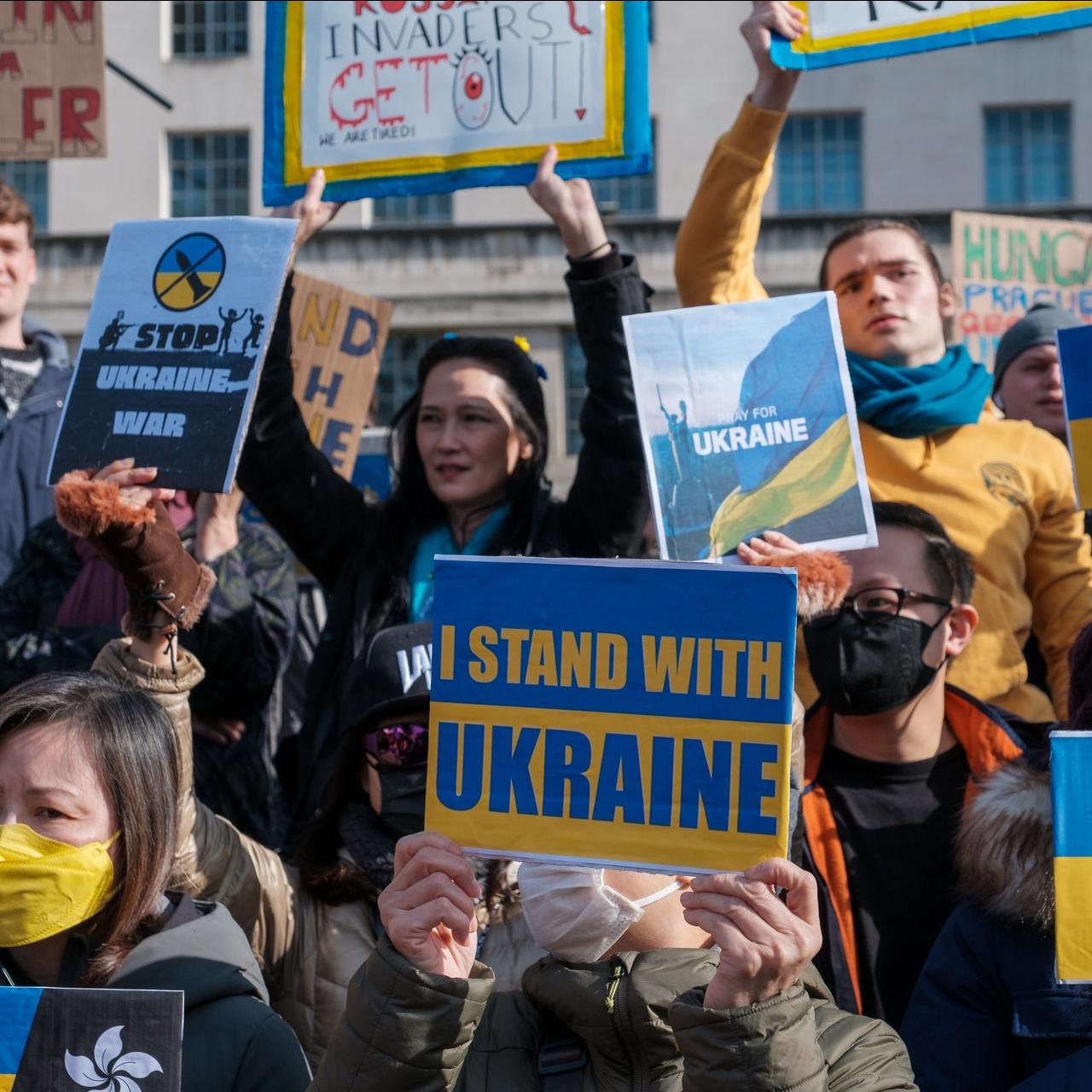
Russian media has painted a picture of a strong wartime economy, enabling the country to continue its war against Ukraine and ultimately prevail. The evidence, though, clearly indicates that the Russian economy is in free fall. The economic sanctions are working, and a new study based on exclusive research by the Yale School of Management describes how business leaders have played a key role in making them work. Even so, the same fascistic tendencies at work in Russia are present here at home, with no similarly coordinated response from U.S. businesses.
When boycotts work: brand reputation on the line
Consumer boycotts are notoriously fickle and difficult to sustain. Business-to-business boycotts, though, have become powerful tools for progressive activists fighting against hate speech, misogyny and extremism from the radical right.
The grassroots campaign #GrabYourWallet is one leading example. Launched during former President Trump’s 2016 campaign, #GrabYourWallet organized members of the public to contact and shame retailers that were selling goods under the Trump and Ivanka brands. The effort was aimed at drawing attention to the candidate’s racist, xenophobic remarks in the runup to Election Day, and his to policies as U.S. president afterwards.
Editor's note: Be sure to subscribe to our Brands Taking Stands newsletter, which comes out every Wednesday.
Another boycott campaign that launched around the same time, Sleeping Giants, organized members of the public to shame advertisers on media that enable or disseminate hate speech and right-wing extremism.
The boycott movement has also expanded to include withdrawing platform support. For example, some tech companies halted business with the extremist social media site Gab in 2018, after it was linked to a hate-fueled massacre at a synagogue in Pittsburgh.
Another example is OAN, a far-right media organization reportedly favored by Trump. OAN has been dropped by both of its major television carriers, DirectTV and Verizon. It is also facing a lawsuit by the company Dominion Voting Systems over unfounded claims of voter fraud during the 2020 election.
Brand reputation and the business case against Russia
The experience of progressive business-to-business boycotts in the U.S. helped prime the pump for the corporate response after Russia launched its unprovoked attack on Ukraine in February.
In fact, the organizing forces behind the Russia boycott are similar to the models used by #GrabYourWallet and Sleeping Giants. They coordinate and amplify the voice of progressive sentiment in order to encourage corporate activism.
Shortly after Russia’s attack on Ukraine, for example, the organizations Good Lobby and Progressive Shopper created an online index for consumers to track the corporate response to the invasion.
Here in the U.S, the Yale School of Management set up a similar system. Within six weeks of the invasion, their online list included hundreds of U.S. companies that had voluntarily withdrawn or curtailed operations in Russia, as well as those failing to take action.
As with the other online boycotts organizers, Yale set up its index with a very specific goal.
“We realize that some companies already do business with many other repressive and murderous regimes around the world. But now there’s a chance to draw a line with one country, over one unprovoked war of aggression, and make a difference,” they explain.
When boycotts work: the Yale difference
In contrast to other Russia boycott indexes, the Yale project leverages a considerable range of unique resources. A team of 24 researchers combs through “private Russian language and unconventional data sources including high frequency consumer data, cross-channel checks, releases from Russia’s international trade partners, and data mining of complex shipping data.”
Another point of contrast is name recognition. The Yale School of Management came into the corporate tracking field with a widely recognized legacy brand name of its own, and a worldwide reputation for academic excellence and policy influence.
The Yale project is led by Jeffrey Sonnenfeld, the Lester Crown professor in management practice and a senior associate dean at the Yale School of Management, and Steven Tian, the director of research at the Yale Chief Executive Leadership Institute. They credit the school’s reputation with raising the profile of their index from the beginning.
“When the list was first published the week of February 28, only several dozen companies had announced their departure from Russia,” they point out. “In the two months since, this list of companies staying/leaving Russia has already garnered significant attention for its role in helping catalyze the mass corporate exodus from Russia, with widespread media coverage and circulation across company boardrooms, policymaker circles, and other communities of concerned citizens across the world.”
This boycott really is working
Sonnenfeld and Tian recapped the Yale boycott tracking project in an article published in Foreign Policy magazine last week.
“Far from being ineffective or disappointing, as many have argued, international sanctions and voluntary business retreats have exerted a devastating effect over Russia’s economy,” they wrote.
They also published an analysis of their findings in the online library SSRN, titled “Business Retreats and Sanctions Are Crippling the Russian Economy.”
According to their analysis, the 1,000-plus companies exiting Russia represent a combined investment of more than $600 billion, or approximately 40 percent of Russian GDP.
This astonishing feat of solidarity “almost single-handedly” reversed 30 years of progress on attracting foreign investment and integrating the Russian economy with the rest of the rest of the world, they write.
As a consequence, the authors assert, domestic production has virtually halted, and the nation is incapable of replacing the loss of business, or the loss of employee and executive talent. That includes foreign employees in Russia who were expelled along with an estimated 500,000 Russian citizens who fled their own country after the invasion, taking their skills, experience and assets along with them.
“Looking ahead, there is no path out of economic oblivion for Russia as long as the allied countries remain unified in maintaining and increasing sanctions pressure against Russia,” the Yale team asserts. “Defeatist headlines arguing that Russia’s economy has bounced back are simply not factual — the facts are that, by any metric and on any level, the Russian economy is reeling, and now is not the time to step on the brakes.”
ESG lessons for the U.S. as fascism spreads
The success of the Russia boycott is a clear demonstration of the power of U.S. and global businesses to push back against fascism. It also demonstrates that fighting fascism can have bottom-line benefits.
“We found that foreign investors by far and large rewarded companies for removing the risk overhang associated with exposure to Russia,” the Yale team explains.
In that regard, the Russia boycott reflects the strength of the ESG (environment, social and governance) sustainable investing movement.
ESG reporting is still in the early stages of standardization, which leave some room for uncertainty. However, the field is also maturing and expanding to encompass corporate behavior on a holistic level.
In one especially interesting example, S&P booted Tesla from its S&P 500 ESG Index last May.
“While Tesla may be playing its part in taking fuel-powered cars off the road, it has fallen behind its peers when examined through a wider ESG lens,” explains Margaret Dorn, S&P’s Head of ESG Indices North America.
Businesses that take brand reputation and ESG reporting to heart were highly motivated to withdraw from Russia, and they made the right decision. Now they need to reassess their role in supporting the fascist movement in America.
It's no accident that the pattern of policy making on the Republican side of the aisle, including the 6-3 Republican majority in the Supreme Court, echoes the regime of Russian President Putin. Homophobia, transphobia, misogyny, censorship, banning books, rewriting history, disrupting the electoral system and fostering violence to achieve permanent power are all part of the plan, here in the U.S. as in Russia.
If any more line-drawing from the business community is forthcoming, right here at home is a good place to start.
Image credit: Ehimetalor Akhere Unuabona via Unsplash
She's Changing the Face of Surfing and Making the Sport More Inclusive


Double Six Beach in Seminyak, Bali, Indonesia
The civil rights movement lost two icons this week, Nichelle Nichols and Bill Russell. Nichols’ role as Uhura on the original 1960s iteration of Star Trek helped open doors for Black women in the entertainment industry. Later, she became an ambassador for NASA encouraging women of color to pursue their career dreams in STEM (science, technology, engineering and math).
Russell, of course, was a transformative figure in sports, as he changed basketball from what had been a rigid, tactical game played by shorter and faster players to what is now a breathtakingly fast-paced 48 minutes during which some of the globe's tallest, most talented athletes play. More importantly, he helped integrate what for years had been a sport for white guys.
Nichols and Russell leave behind some big shoes to fill. Yet change-makers out there continue to break barriers, paving the way for young people of color to dismiss stereotypes and pursue their dreams. One of them is Rhonda Harper, the founder of Black Girls Surf.
Rhonda Harper is opening more doors for Black girls and women
Harper, a Coast Guard veteran who has also worn many hats including as a journalist and carpenter, founded Black Girls Surf almost a decade ago after experiencing firsthand the lack of diversity in professional surfing. Her love for surfing started to take shape soon after her family moved from Kansas to northern California. There, she could pursue her love for the water — in Kansas, she could only dream of such experiences from reading magazines.
Competitive swimming wasn’t an option for Harper, however, due to a racist swim coach at her high school. But surfing intrigued her for being an individual rather than a team sport, and a passion was born.
Editor's note: Be sure to subscribe to our Brands Taking Stands newsletter, which comes out every Wednesday.
As she told Sports Illustrated this week, she had to forge her way in a very white sport focused on very “white” concerns. When George Floyd was murdered two summers ago, Harper responded with organizing a global “paddle-out” to protest how Black people have continued to be treated in the U.S and abroad. Many of the participants were Black surfers who had felt threatened at beaches for participating in the sport they love.
“The surfing industry was so locked into environmental justice that they didn’t realize it goes hand in hand with social justice," Harper told Sports Illustrated contributor Bryna Jean-Marie. "We know that because there’s landfills in Black and brown communities. This is not just about the ocean. It’s about the environment and its totality. I was watching my white counterparts talk about whales being killed. And on the other side, all my Black friends were crying because Black people are being killed.”
A career of many firsts, going beyond surfing
Harper’s commitment to diversifying the world of surfing has led her to many firsts. She’s the first Black judge certified for professional surfing events; she founded an apparel line focused on Black women surfers; she has filmed, funded and mentored female Senegalese surfers, including Khadjou Sambe, who is now training for the Olympics; and of course, there's her ongoing work at Black Girls Surf.
Black Girls Surf’s programs include surf camps for Black women and girls, semi-private surf lessons, and even surf therapy.
It’s a tall order to carry on the work of the likes of Nichols and Harper, but if anyone can charge ahead in breaking down barriers, Harper is on the short list.
Black Americans still feel excluded from public spaces
She certainly stands her ground, as she has no choice: Like many Black people in America, she’s been made to feel unwelcome in public spaces. In a profile done in 2020 by the Surfrider Foundation, she recalled an experience she had in Santa Cruz, California, a town so progressive that liberals are seen as right-wingers: “I’m standing in the middle of the street at Pleasure Point yelling at this grown grandpa about the beach which is free and a public entity. Why am I arguing with you about territory on the beach when it’s public property? That’s where we are where grown men have decided to intimidate people who look different than them for no reason at all.”
Watch surfing to become more diverse worldwide thanks to Harper’s work. Black Girls Surf first started with two girls. When the organization expanded to South Africa, it had to halt applications because the number of girls and women interested in the sport was overwhelming. That enthusiasm keeps paying off. Now, Harper is joined by other Black women who want it known that the oceans and beaches belong to everyone.
Image credit: Roman Raizen via Unsplash
‘Cite Me; Pay Me’: Protecting Black Women’s Intellectual Property in a Digital Age


Protecting intellectual property on the web can be a dicey proposition. In the vast and bountiful wilderness that has become the internet, individuals can misappropriate or blatantly steal what someone else has created and profit from the material without the creator ever knowing.
The damage to the economy is well-recorded for the creative industries. A 2019 report from the U.S. Chamber of Commerce estimates that digital piracy of videos displaces between $30 billion and $70 billion in annual revenue. The Chamber of Commerce also connects the practice to a loss of 230,000 to 560,000 jobs each year.
‘Copyright exists from the moment the work is created’
Marc Sazer, a violinist, explains the human consequences of IP theft. “When our work is stolen, we’ve been robbed of our living,” he told the Department for Professional Employees (DPE) — a coalition of 24 national unions touching various sectors. “We are artists, but we are also working people who depend on the intellectual property that we create to pay for our homes, families, health care, and more.”
Perhaps, the law is at fault. The governing law for intellectual property on the internet is the Digital Millennium Copyright Act, which popped onto the scene 24 years ago. Some, including the DPE, call it “outdated.” Others, such as the Electronic Frontier Foundation (EFF), a nonprofit that defends civil liberties like privacy and free speech on the internet, note the creative freedom the law’s processes have afforded the web.
Law reform may (or may not) be part of the solution. Thankfully, dancing around legal hypotheticals isn’t necessary to find progress in protection. After all, the U.S. Copyright Office teaches, “Copyright exists from the moment the work is created.”
Getting back to the basics: Citing and paying creators
Qualitative researcher Dr. Carey Yazeed jokes that her pronouns are, “Cite me; pay me.” That’s how preciously she now holds those actions. She learned recently that those simple steps are not always guaranteed when you put your intellectual property into the world.
Just last year, Dr. Yazeed posted a thought piece that went viral — more than once. Within just one month, it got 30,000 hits. She said, at first, she was just trying to keep up with moderating all the comments on social media, positive and negative responses alike. Then, she started to hear that others were being asked to speak on the topic of her article, even conducting workshops and trainings, without having relevant expertise.
In a post about the experience, Dr. Yazeed shared, “…I learned from several individuals who shared my article with their audiences on social media that they were invited to be guests on several podcasts, offered paid speaking engagements and served on panel discussions.” One man asked if Dr. Yazeed herself had received requests to elaborate on her ideas. The answer? Barely.
More than one individual has simply pasted pieces of her work directly to social media — without quotation or attribution. Dr. Yazeed also learned second-hand about a training program that was created for mental health clinicians at a university. “And it was based on my article,” she said. No one had reached out to her for permission or even a conversation. And when Dr. Yazeed contacted the creator of the program, she received no response.
One man reposted her article and was starting to get requests to speak on the topic. He kindly redirected the requests to Dr. Yazeed. Surprisingly, many insisted that he speak instead. He didn’t, but clearly not everyone has taken that ethical stand.
Yes, race and gender are relevant to the issue of intellectual property theft
Dr. Yazeed notes that the individuals she’s seen benefiting from her work have been Black men and white women, a fact that may not seem relevant to some. Dr. Yazeed said she recognizes that society doesn’t see IP theft as a specific problem for Black women. But, she added, “I can say that, since I have spoken out, I have seen other Black women come forward and share how their intellectual property has been stolen.”
A quick Google search brings up other instances of blatant theft. Of course, there’s the recent “Juneteenth ice cream” debacle, in which critics accused Walmart of stealing a flavor from Creamalicious, a company founded and led by a Black woman. Then, there are entire books that writers have based off the original research and ideas of Black women. If that’s not enough to convince you there’s a pattern here, consider this collective that centers around citing Black women.
Some have told Dr. Yazeed that the issue she’s really facing is copyright. Maybe she shouldn’t have posted her ideas in a blog format to begin with. Dr. Yazeed is pursuing copyright for her article, but she said there isn’t any easy way to protect a blog post, and you don’t really expect blogs to take off. Questions like these make her wonder, “Should I just not say anything at all?”
A #MeToo movement for Black female IP owners
Two of Dr. Yazeed’s recent speaking engagements failed to actually give her a voice. One was a virtual panel discussion in which Dr. Yazeed wasn’t given time to elaborate on her ideas. Additionally, just before the event, she was asked to exclude an element that constituted the crux of her argument. She’s not entirely sure why she was invited to speak in the first place, but all signs point to the group using her name and image to muster public interest.
Another more recent event was cancelled, even though people in the company had been showing excitement and interest in hearing what she had to say. Dr. Yazeed was told the reason for the abrupt cancellation…apparently, she is known for being a “problematic Black woman.”
For Dr. Yazeed, being called problematic isn’t her biggest concern. “Other people learn from what has happened with me…to speak up when you see that it’s being done,” she said, speaking to the issue of stolen intellectual property. “My thing is this — people are going to call us problematic anyway.”
“I think the first issue is that, as Black women, we are often told not to speak publicly about our problems,” Dr. Yazeed said. “That you keep those things either to yourself or they're shared with your inner circle, but you don't make it public. And so, I think the problem becomes that a lot of us think that this is only happening to me, and it's not happening to anyone else.”
She said it is easy to start believing that there’s nothing you can do when your intellectual property is stolen. After all, the individual or company that took from you could simply have more money or power than you do. Plus, no one is going to believe you. Nevertheless, having the courage to share when your IP has been stolen, Dr. Yazeed emphasized, has radiating benefits that encourage others. These could be the beginnings of another #MeToo movement of sorts, building awareness around an issue that remains easily hidden from public view.
In the kindest of terms, Dr. Yazeed calls stealing intellectual property borrowing a cup of sugar with no intention of returning it. “The way you return it is — just cite the person. Give them credit so people can go and check out other stuff that they've done, even if you can’t pay us.” It’s a modest ask, and almost incredible that Dr. Yazeed even has to remind people, but sharing the significance these simple actions carry may just help transform the way Black women’s intellectual property is treated at large.
Image credit: Christina Morillo via Unsplash
Peaker Power Plants Pose Preposterous Pollution Problems
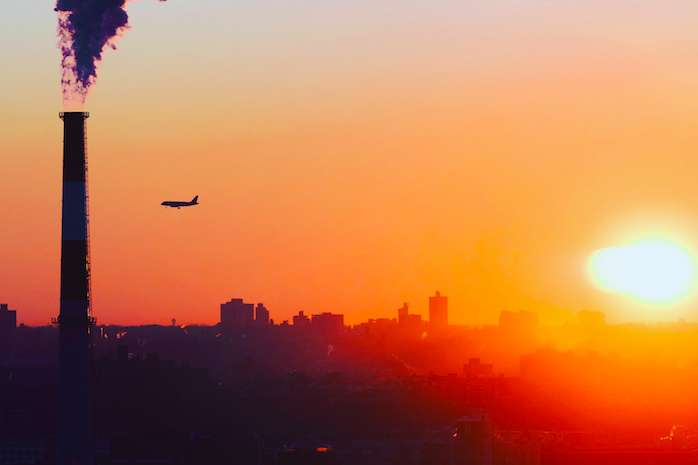
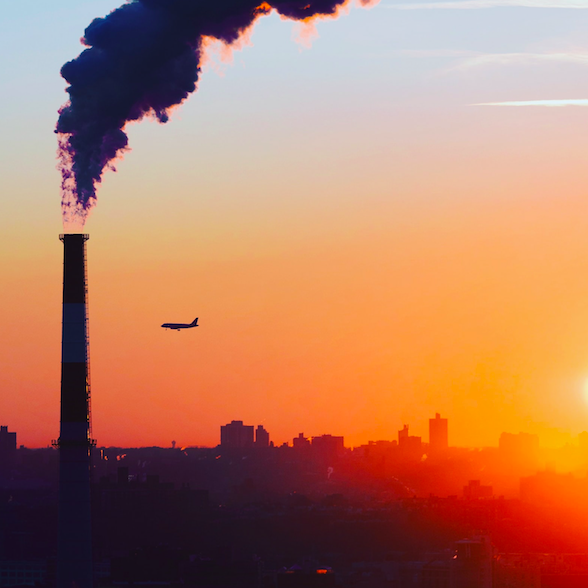
Approximately 32 million Americans live within three miles of a peaker power plant, which puts them at an elevated risk for various health problems — from asthma to heart disease — as well as increased rates of death. A recent study from Clean Energy Group found that emissions from peaker power plants were significantly higher when they are located near low-income neighborhoods where 65 percent or more of the residents are people of color. While environmental injustice is nothing new to vulnerable communities, reports like this one give ammo to activists in the fight for equity and provide an impetus to move towards clean, sustainable energy.
Peaker power plants are supplemental energy-producing systems that can be turned on and off quickly to help meet demands for electricity when usage peaks, such as during a snowstorm or heatwave. But this convenience comes with a price — they produce more pollution than the baseload plants that supply day-to-day energy needs, and those extra pollutants end up in surrounding communities.
According to the report, the authors of which studied peaker plants in Boston, Philadelphia and Detroit, two-thirds of these power plants are located in low-income neighborhoods (defined as 29 percent or more of households at or below 200 percent of the federal poverty line). However, pollution rates vary greatly due to how old the systems are and what sort of maintenance or upgrades are done. Who owns the plants can affect how efficient, and therefore how polluting, they are: The owners of such power plants are generally municipalities, “merchants” (private investors without shareholders, thereby assuming all risks) or investor-owned utilities (which are accountable to shareholders).
Where the percentage of residents is less than 65 percent people of color, these plants average 14.6 to 16.4 lbs. of nitrogen oxide per kilowatt hour produced. But where that percentage is 65 percent or higher, the plants average 23.8 lbs. per kilowatt hour. It isn’t just nitrogen oxide that is being pumped into these communities either — sulfur dioxide along with fine particulate matter (PM 2.5) are also emitted. The health repercussions for those living in communities polluted by these compounds include lower fertility rates — including miscarriages — as well as higher percentages of residents suffering from heart disease, chronic kidney disease, asthma and Alzheimer’s Disease.
Early on in the COVID-19 pandemic, researchers found a 15 percent increase in deaths from the virus with previous long-term exposure to elevated levels of PM 2.5 — so it is fair to assume that at least some of the disproportionate mortality experienced by people of color is due to the discriminatory nature behind what is driving the placement of peaker power plants in the first place.
Fine particulate matter has also been linked to cardiac arrest, even with short exposures at low levels. Considering the data concluding that Blacks across the U.S. have a much higher rate of cardiac arrest than whites regardless of age, the location of peaker power plants can be considered as among the contributing factors to higher rates of heart disease and lower life expectancy.
Ultimately, environmental justice is a matter of equity in health and quality of life. The use of peaker power plants as a stop-gap measure for periods of high energy consumption creates injustice by increasing rates of preventable disease in low-income neighborhoods and communities of color. The information in the Clean Energy Group’s report is useful to community members and activists who are seeking to stop new peaker plants from being built and maybe even decommission old ones.
Doing away with peaker plants also presents the opportunity to explore alternatives that could benefit communities instead of hurting them. Switching to sustainable energy sources for supplemental production could jumpstart a move towards more sustainable baseload production as well. After all, renewables are cheaper in the long run after the initial investment is out of the way.
Image credit: Thijs Stoop via Unsplash
Activism Works: The Climate Bill is Back, For Now
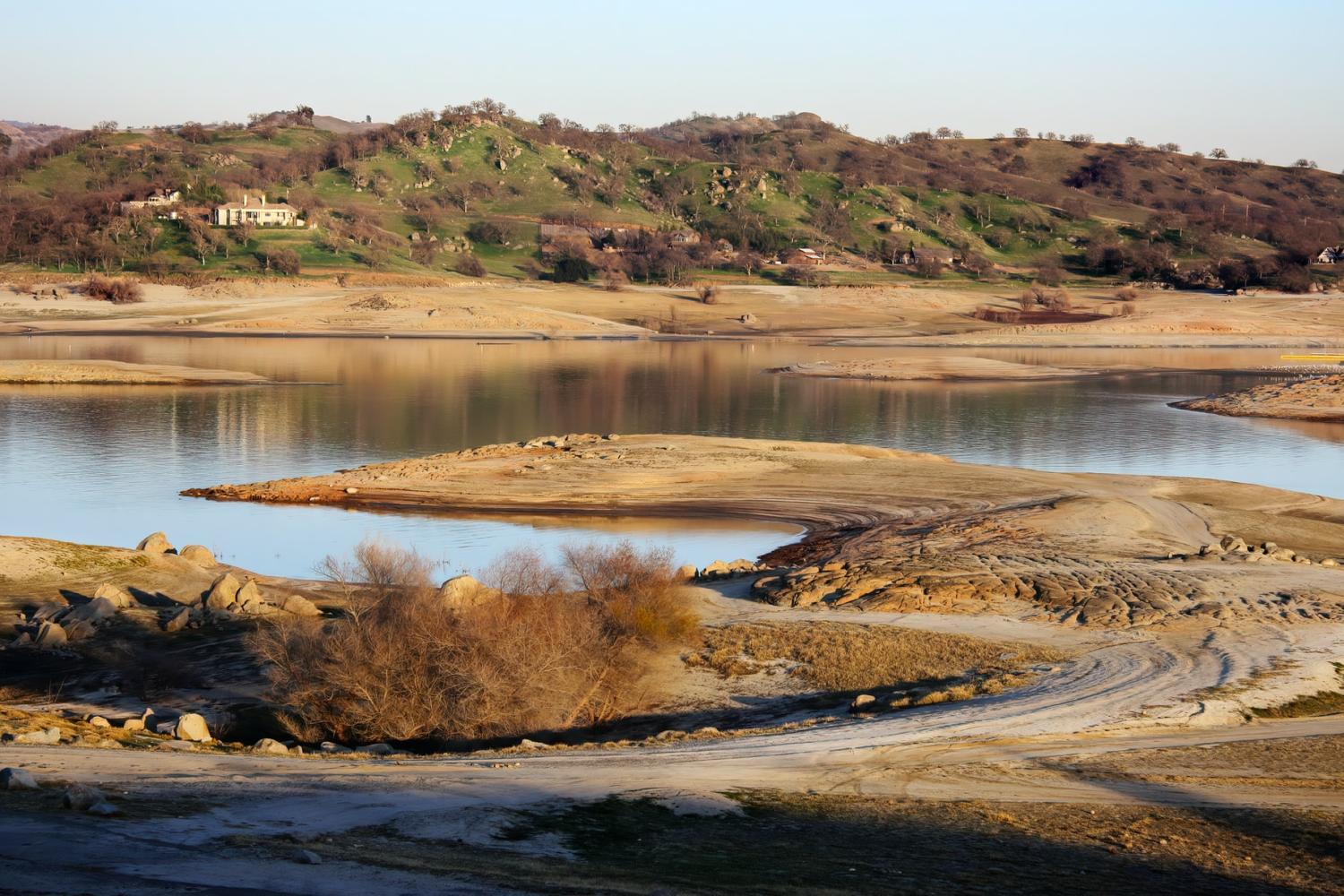
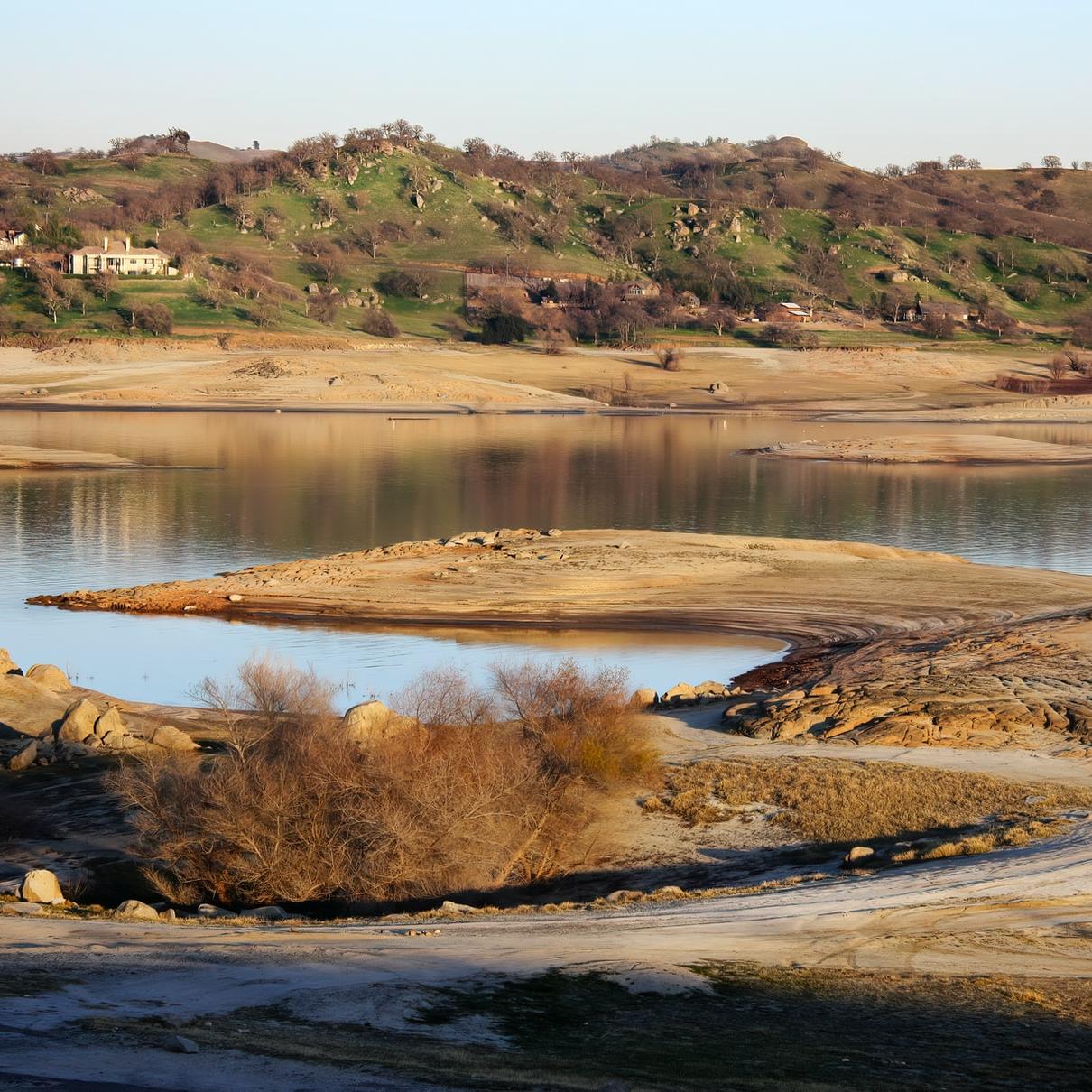
Low water levels at Millerton Lake in California's San Joaquin Valley
Build Back Better was President Biden’s signature economic development, social justice and climate bill, and it was declared all but dead in the water just two weeks ago. However, in a surprising twist the bill is back on again. Several S&P 100 corporations can take part of the credit, but many more businesses, activists and other stakeholders had a hand in ensuring that climate action remains a central pillar of the newly revived legislation.
Build Back Better comes back to life
Build Back Better came back from the dead only because U.S. Senator Joe Manchin (D-WV) unexpectedly flipped his “no” vote to a “yes.” He announced the flip in a joint statement with Senate Majority Leader Chuck Schumer (D-NY) on July 27. The move surprised everyone. That includes all 50 Republican senators, who still plan to vote against the bill as a block.
Nevertheless, with Senator Manchin joining the 49 other Democratic Senators, and Vice President Kamala Harris casting the deciding 51st vote, the Democrats have enough votes to pass the measure on their own. The only remaining question mark is Arizona Senator Krysten Sinema, whose intentions are unknown as of this writing.
The notoriously demanding Manchin had some demands for the current version of Build Back Better. It is a much less ambitious bill than the one introduced last fall. In addition, the name has now been changed to the more timely title of “Inflation Reduction Act of 2022.” Still, the bill received an enthusiastic reception from business groups and other organizations that supported Build Back Better.
Corporate activism makes a difference on the new climate bill
Many businesses turned out to lobby for the climate bill provisions in Build Back Better when it was first introduced. The American Sustainable Business Network, Ceres, American Clean Power and the Solar Energy Industries Association were among the organizations that assembled public letters to Congress signed by hundreds of companies.
That level of corporate activity helped to overcome the influence of powerful trade organizations like the U.S. Chamber of Commerce, which pushed against Build Back Better in force. Corporate lobbying also helped to counterbalance Manchin’s personal and political ties to the fossil energy industry.
As for S&P 100 companies, a recent analysis by the firm InfluenceMap indicates that, as a group, they could have done much more to support the climate provisions in Build Back Better in public.
However, InfluenceMap did identify a group of S&P 100 companies that consistently lobbied on behalf of the climate bill provisions. This group of 14 companies has had an outsized influence on the decarbonization movement, including Apple, Amazon, Salesforce, Exelon, Alphabet, Intel, Meta, Microsoft, Netflix, PepsiCo, Walmart, NextEra, General Motors and Ford Motor Company.
Last year, for example, the U.S. Environmental Protection Agency tapped Microsoft for its annual Green Power Leadership awards. EPA cited the company’s internal decarbonization efforts as well as its overall commitment to electrification, and its support for under-resourced communities.
The influence of employee activism and organized labor
Additional pressure on Manchin came from Congressional staffers. On July 12, CNN and other media reported that more than 200 staffers had taken the extraordinary step of signing onto a public letter, pleading with Democratic leadership to pass a climate bill.
“The silence on expansive climate justice policy on Capitol Hill this year has been deafening. We write to distance ourselves from your dangerous inaction," they wrote.
To the extent that staffers represent a younger generation than members of Congress, the letter underscored a growing generational divide on climate policy. The message is especially relevant to those in Manchin’s generation. He will turn 75 this month, exceeding the average age of current U.S. senators by a good 10 years.
The employee activism within Congress has been mirrored by labor organizations acting on behalf of workers. In particular, the United Mine Workers of America union is beginning to play a key role in changing the public conversation around fossil energy jobs.
The number of coal miners in the U.S. has been falling precipitously for generations. Nevertheless, coal miners still hold a powerful position in the media landscape, as capably demonstrated by former President Trump during his 2016 campaign.
The message of coal jobs resonates especially loudly in such coal producing states like Senator Manchin’s home state of West Virginia. However, UMWA is among the labor organizations that have seen the energy transition writing on the wall. U.S. coal jobs are not coming back, regardless of Trump’s promises.
UMWA got a start on supporting the decarbonization movement in the spring of 2021, when it lobbied on behalf of the Bipartisan Infrastructure Bill. Its support was conditional on the bill’s provisions for black lung and other coal miner health care. UMWA also emphasized that the bill would help create new jobs in communities abandoned by the coal industry. The Bipartisan Infrastructure Bill passed last fall.
Meanwhile, UMWA also lobbied in support of Build Back Better. Last December the union gently chided Manchin for holding out against that version of the climate bill. In a public statement, union’s leadership cited the bill’s “tax incentives to encourage manufacturers to build facilities in the coalfields that would employ thousands of coal miners who have lost their jobs.”
“We support that and are ready to help supply those plants with a trained, professional workforce,” they emphasized.
Losing the support of coal miners in a coal state was a bad look for Manchin. Nevertheless, he continued to play the holdout card for months, until he finally let go.
After Manchin announced his support for the re-named Inflation Reduction Act, UMWA issued a follow-up statement that emphasized the bill’s health provisions. They also added this observation:
“We are also pleased to see that provisions were included in the IRA that will extend tax credits to renewable energy supply chain manufacturers that build plants in the coalfields, which will be a big step toward providing good jobs to these distressed communities.”
The new energy tug-of-war
UMWA also took note of some provisions in the Inflation Reduction Act that benefit fossil energy industries, especially in the area of carbon capture.
“The enhanced tax credits for carbon capture and storage included in the legislation will also be a boon for coalfield jobs,” they noted.
That remains to be seen. Carbon capture and sequestration technology has yet to be proven at scale, and new green hydrogen technology is beginning to compete with coal, oil and natural gas alike.
In addition, clean power developers are beginning to seek new opportunities in West Virginia. As noted by UMWA, existing coal fields can provide sites for clean power production. Long duration energy storage is another option for development on coal fields. The state also possesses unique geothermal resources that have yet to be tapped.
Advocates for fossil energy with carbon capture got their carveout in the new climate bill, but it’s not a magic carpet. They will have to compete for space in a new energy landscape, in West Virginia and elsewhere, where job creation does not go hand in hand with sickness, poverty and environmental catastrophe.
Image credit: Simon Hurry/Unsplash
How Clean Tech Can Benefit from Inclusive Hiring
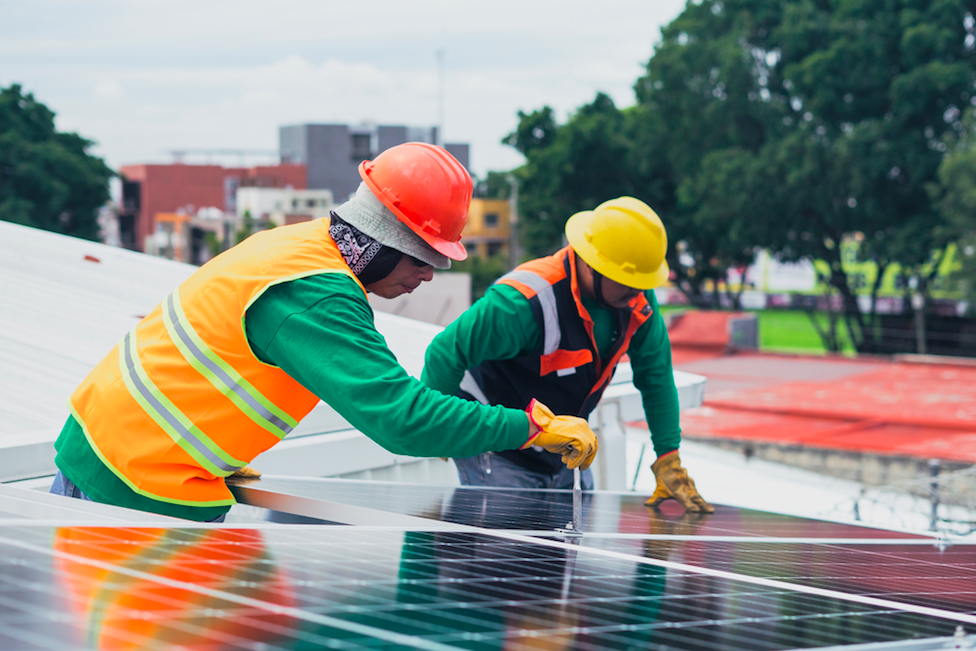
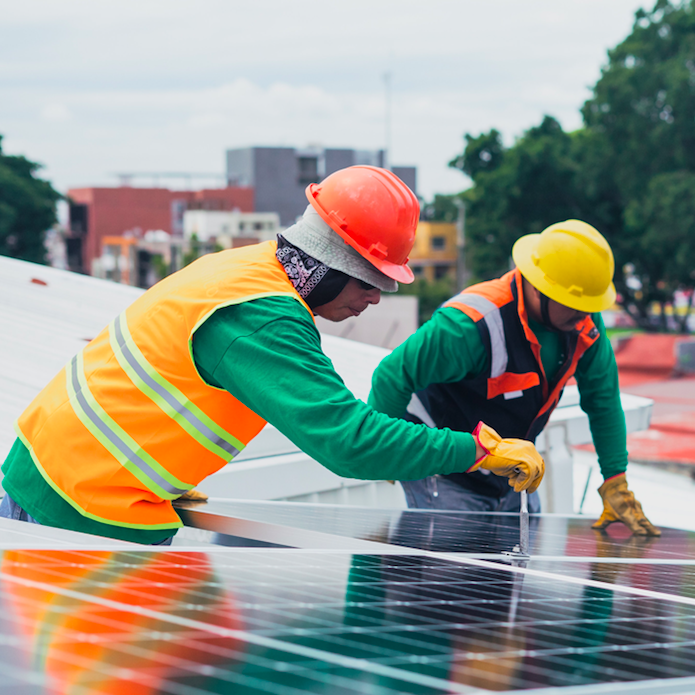
A global economy transitioning from traditional fossil fuel-based industries to renewables, the need to build 13,000 buildings a day to meet global demand, and growing labor shortages in the construction and manufacturing sectors sounds like a recipe for chaos. However, it also presents growing opportunities to uplift communities sorely in need of renewal through inclusive hiring in the burgeoning clean tech sector, which is estimated to generate millions of jobs by the end of the decade.
To assist their customers and communities in identifying those opportunities and encouraging more equitable pathways into emerging clean tech jobs, the Autodesk Foundation, the philanthropic arm of the multinational software corporation Autodesk, has joined with organizations including LinkedIn and Workday for a cross-industry coalition, the Just Transition Collaborative.
Facilitated by the social impact company NationSwell, the Just Transition Collaborative focuses on communities and regions most impacted by the shift from traditional fossil fuel to sustainable industries, explained Kate McElligott-Buchanan, head of Autodesk’s “Future of Work” practice, in a recent article her company published on its web site.
“The effort is guided by the concept of just transition: the notion that no one is left behind in the transition to a green economy,” wrote McElligott-Buchanan.
Bottom line, the anticipated surge in demand for these clean tech jobs will require companies to embrace more inclusive hiring.
New demands for new jobs in a new economy
The International Labor Organization estimates 24 million jobs could be created by the global clean tech sector by 2030 across a wide range of industries, including renewables, of course, but also in industries such as finance and transportation.
In the U.S alone, as many as 2.1 million manufacturing jobs might go unfilled by 2030, and in the construction industry, there could be as many as 200 million unfilled jobs globally by the end of the decade. The statistics do not account for new demands for workers in manufacturing and construction roles involving renewables and energy-efficient technologies, where additional investments could create up to 10 million more jobs across the world, McElligott-Buchanan explained.
Globally, the construction sector represents 39 percent of energy- and process-related emissions, with 28 percent of emissions coming from operational energy consumption and 11 percent from producing building materials such as cement, metal and glass.
“This is a real challenge when you consider that to keep pace with the growing urbanization of the global population over the next 30 years, the construction industry will need to build an average of 13,000 buildings every day to keep up with demand,” said McElligott-Buchanan.
Meeting that demand while lowering the construction industry’s carbon footprint will require revolutionary changes in building techniques and materials.
Can the building industry get anywhere close to net-zero?
Three years ago, the World Green Building Council, with the support of 80 organizations, issued a report describing several actions to move the construction sector towards a net zero future, through the elimination of both operational and embodied carbon emissions. These actions could result in the construction industry cutting less embodied carbon emissions by 40 percent by 2030 and achieve 100 percent net zero emissions buildings by 2050.
Manufacturing uses about one-third of the world’s energy. Reducing waste and water usage, adjusting energy loads, and tapping into renewable resources can give factories of the future the potential to become part of a global green economy while they reduce costs, McElligott-Buchanan said — but only if industry professionals are prepared to take on new and more sustainable approaches toward manufacturing.
Autodesk’s business model is dependent on the future of industries such as manufacturing, added McElligott-Buchanan. “Construction and manufacturing, two key industries we serve, face challenges in reducing their carbon footprint while meeting the increasing demand for qualified workers in a dynamic labor market,” she wrote.
Inclusive hiring is needed from the clean tech sector
The confluence of moving towards clean energy, increased demand for housing and labor shortages give an opportunity to close gaps in hiring practices are the U.S., noted McElligott-Buchanan.
With investment from the Autodesk Foundation, the Just Transition Collaboration examined existing hiring approaches in order to find ways to promote more inclusive practices in industries that could create thousands of middle-skill clean tech jobs. The partnership researched key roles and workforce development practices in industries that are generating middle-skill green jobs such as manufacturing, clean energy (particularly solar power and electric vehicles) as well as environmental, social and governance (ESG) compliance.
The Just Transition Collaboration spoke with stakeholders in Indigenous, Appalachian and Midwestern communities that have the most to gain from such new career opportunities, added McElligott-Buchanan. The outreach was also important to understand how jobseekers are affected by these ongoing economic changes and find new ways in which the clean tech sector can do its part to accelerate inclusive hiring.
The research provided additional insight that can have an impact on the Autodesk Foundation’s investment strategy and thereby create meaningful change within communities that Autodesk serves, said McElligott-Buchanan. For example, the paths into mid-skilled sustainability jobs are obscure and often include many barriers to entry, such as the need for academic qualifications or expensive credentials. Employers seeking to fill such roles tend to seek and value on-the-job experience; to that end, they often will not hire entry-level talent who lack at least five years of experience. Finally, a key barrier to inclusive hiring within these new careers is the lack of any understanding that acknowledges a prospective employee’s life circumstances.
“Reducing barriers to entry, investing in early career talent, and providing wellbeing services for employees, all play a role in bridging the gap for diverse workers,” said McElligott-Buchanan. “And while this supports green workers, it’s good practice for all workers.”
Image credit: Los Muertos Crew/Pixabay
Employers’ Vigilance Needed as COVID-19 Surges, Again


It may seem like a bad dream, but it’s for real. The COVID-19 virus is surging yet again. New variants like the Omicron BA.5 subvariant are raging through unvaccinated populations in the U.S. and elsewhere around the world. The variants are also pushing through the immunity barriers of vaccines and previous infections. As summer fades into winter, public health experts worry that the pandemic will explode again, and employers should start taking steps now to protect their employees, customers and clients.
On COVID-19, It’s déjà vu all over again
Clinic-based COVID-19 testing has been falling out of practice, which means that the number of confirmed positive cases understates the extent of the resurgence. A more accurate indication is the presence of the virus in wastewater, which the U.S. Centers for Disease Control (CDC) adopted as an early warning system during the first outbreak in 2020.
“Data from wastewater testing support public health mitigation strategies by providing additional crucial information about the prevalence of COVID-19 in a community,” CDC explains, noting that “wastewater surveillance captures presence of SARS-CoV-2 shed by people with and without symptoms.”
“By measuring SARS-CoV-2 levels in untreated wastewater over time, public health officials can determine if infections are increasing or decreasing in a sewershed,” they add.
On July 26, Fortune Magazine reported on a wastewater surveillance partnership between Stanford University, Emory University and Alphabet’s Verily precision health branch (formerly Google Life Sciences). According their data, COVID in many locations throughout the U.S. is at or around levels seen during the initial Omicron surge in January, which was the most recent peak level of the pandemic.
That trend is consistent with online COVID-19 trackers, such as the daily updates provided by NBC News, which indicate a recent uptick in hospitalizations and deaths.
Help is on the way
The good news is that the current COVID-19 vaccines are still highly effective at preventing severe symptoms leading to hospitalization, long term illness or death from the new variants.
In addition, last month the U.S. Food and Drug Administration advised manufacturers to create a new “bivalent” booster shot focusing specifically on the BA.4 and BA.5 Omicron subvariants. Contingent on FDA and CDC approvals, plans are already in motion to distribute a total of 171 million doses of the new bivalent vaccines from Pfizer and Moderna this fall and winter.
The plans also include an option to purchase an additional 600 million doses from the two companies combined. However, that additional purchase would require approval from Congress.
How long is long enough?
Until more effective vaccines against the variants are available, employers need to reassess their COVID-19 safety precautions. That includes the length of time employees should isolate after testing positive for the virus.
At the beginning of the outbreak, isolating for 10 days or more was advised. However, based on the growing body of knowledge about infection risks, last December CDC recommended shortening the isolation period to five days, followed by five days of wearing a mask when around other people.
“The change is motivated by science demonstrating that the majority of SARS-CoV-2 transmission occurs early in the course of illness, generally in the 1-2 days prior to onset of symptoms and the 2-3 days after,” CDC explained.
That seems straightforward enough, but it’s not a cookbook recipe. Even though the risk of transmission drops off quickly, a certain measure of risk is still present, and employers need to take that into consideration.
One helpful tool is an online isolation calculator created by CDC. It is designed for use by the general public, to help tailor the isolation period to the particulars of an individual case.
Employers can also follow the guidance provided by President Joe Biden, who contracted COVID-19 in July.
The president prepared for a minimum of five days in isolation, in accordance with the general guidelines, but he also made it clear that he would remain in isolation until testing negative.
“Consistent with White House protocol for positive COVID cases, which goes above and beyond CDC guidance, he will continue to work in isolation until he tests negative. Once he tests negative, he will return to in-person work,” read the official White House statement on July 21.
A guidebook for employers on COVID-19
President Biden tested negative after the fifth day of isolation. Since then, he has used his case as an opportunity to remind the public – including employers -- about common sense steps to reduce the spread of COVID-19, and to prevent serious illness or death from COVID-19.
He presented the information in his first official remarks after returning from isolation on July 27, at a public event in the Rose Garden.
In summary, the guidelines for employers are: continue to take COVID-19 seriously; isolate when necessary; work remotely when warranted; ensure proper ventilation in the workspace (employers should also attend to overall wellbeing in the workspace); see to it that employees have access to free home test kits, available through online order at covid.gov; advocate for masks to reduce the risk of infection in crowded indoor spaces (including masks in the workspace if necessary; and, educate employees about Paxlovid and other antiviral treatments, including information on the “rebound” phenomenon experienced by President Biden and other patients. Paxlovid can be dispensed at many pharmacies without a doctor’s prescription.
In addition, employers continue to advocate for vaccination. In particular, ensure that vaccinated employees are up to date on their booster shots. A convenient vaccination locator is available at vaccines.gov. Another site, Covid.gov, also provides information on “test to treat” sites where patients can get tested for COVID-19 and receive Paxlovid at the same location (some states also offer free telehealth consultations for Paxlovid).
COVID-19 prevention is for everyone
During his remarks, President Biden also emphasized that his case illustrates the democratic state of COVID-19 prevention and treatment today.
In contrast to the helicopter transportation, extended hospital stay and exclusive drug cocktails needed to treat former President Trump for COVID-19 in the fall of 2020, President Biden had the advantage of widely available new vaccines and booster shots, as well as the widely available drug Paxlovid.
He experienced only mild symptoms and was able to recover in the White House residence and offices while continuing to fulfill his duties as Commander-in-Chief.
“The difference is vaccinations, of course, but also three new tools free to all and widely available. You don’t need to be a President to get these tools used for your defense. In fact, the same booster shots, the same at-home test, the same treatment that I got is available to you,” he emphasized.
“Get vaccinated if you haven’t gotten it already. And now, get boosted. Order your free test. And if you get sick and test positive, seek treatment. Take advantage of these lifesaving tools. We have more of these tools than we ever had before,” he added.
That’s a message every employer should know by heart.
Image credit: Heather Morse via Unsplash
Clean Energy Projects Still Have a Human Rights Problem
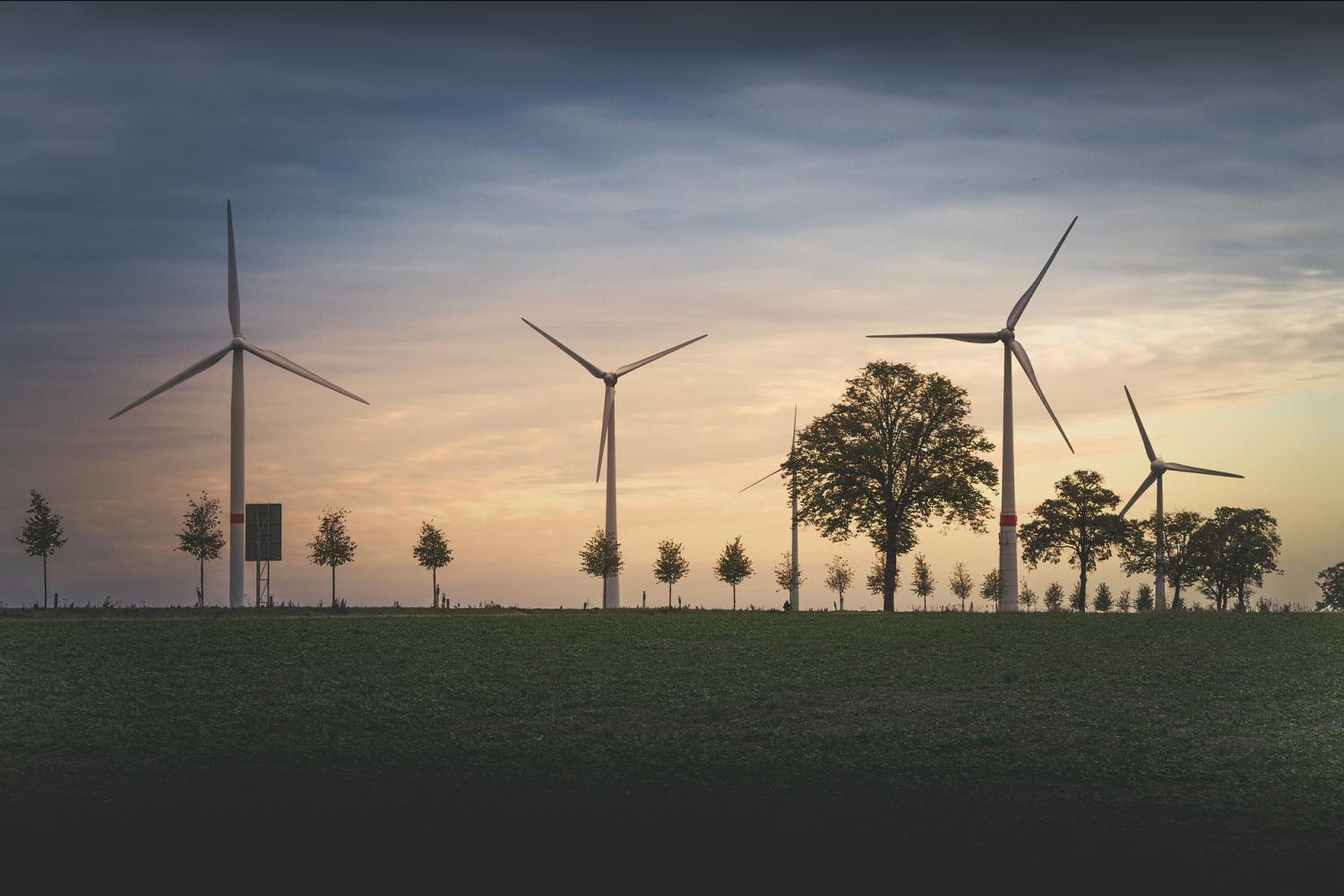
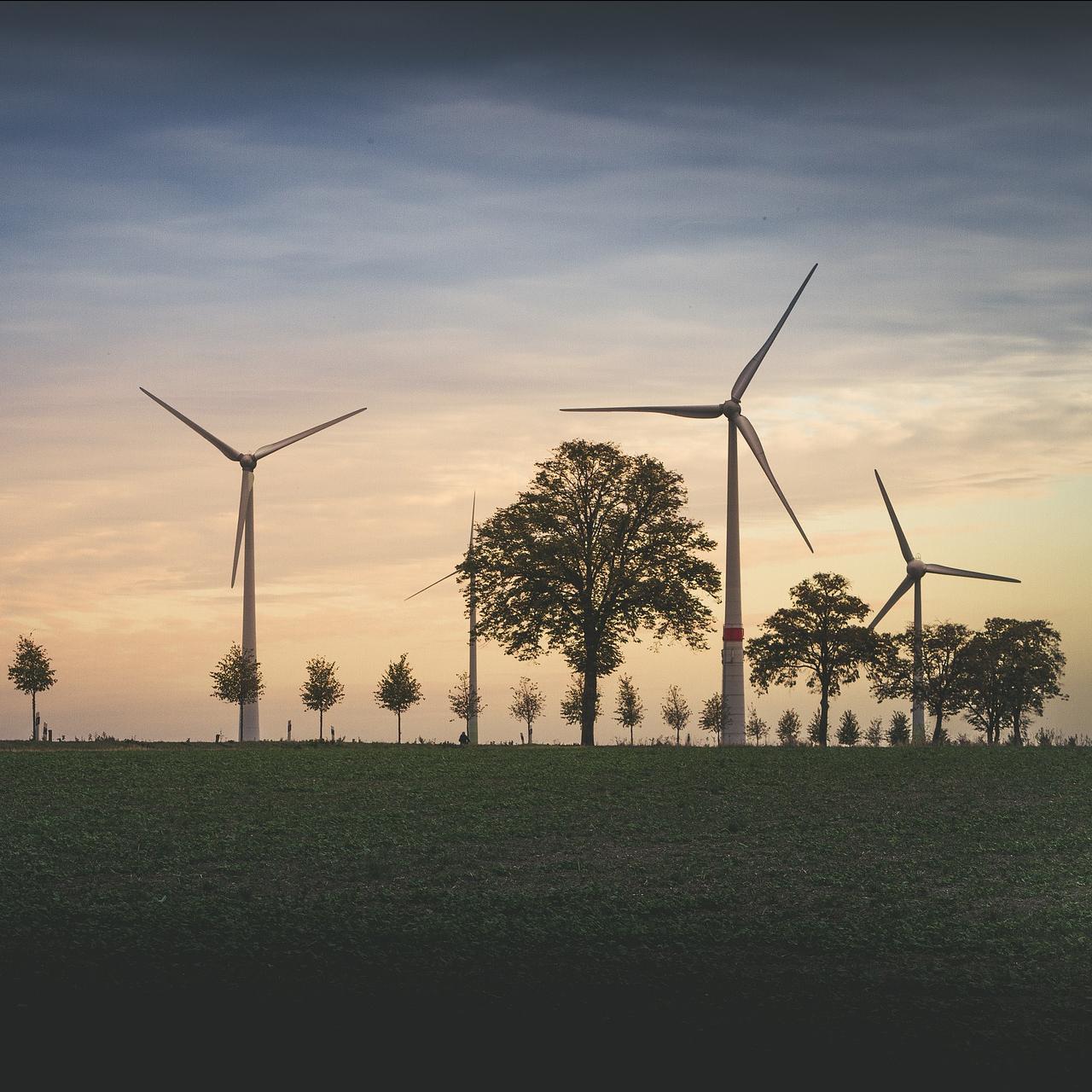
In a year rife with bad news, there are some silver linings. Some of those silver linings are wind turbine blades — at least according to a recent Deloitte report that was bullish on the future of clean technologies such as solar and wind power. According to Deloitte, the renewable power sector will benefit from: a surge in next-gen technologies such as green hydrogen; growth in solar-plus-storage configurations; huge changes in power transmission, which can help integrate clean sources of electricity into grids; supply chains shifts as in the U.S. that allow for more domestic manufacturing; and, green shoots of a circular economy are beginning to emerge within this sector. Indeed, that’s all good news. Such enthusiasm, however, cannot mask the fact that clean energy still has a human rights problem — and this challenge is nothing new.
“As an industry seeking sustainable solutions to one of our most intractable problems, considering the impacts on humans must be part of the equation,” wrote TriplePundit’s Kate Zerrenner two summers ago.
Even if more of the solar power industry’s supply chains needs can be met here in the U.S., much of the manufacturing still occurs in China — notably in the Xinjiang region, notorious for its long history of human rights violations. “Unless drastic action is taken, we will find ourselves at China’s mercy for our energy needs, just as Germany is at Russia’s,” Keith Krach and Kelley E. Currie wrote for 3p last month.
While the U.S. clean energy has its shares of human rights problems with its global supply chain, the toll that such projects can take on local communities across the world — particularly Indigenous peoples — too often hits close to home. As emerging economies seek to do their part to tackle climate change, local renewables projects too frequently are launched without the consent of local citizens. For example, Natalie Bridgeman Fields, the co-founder of the NGO Accountability Counsel, told 3p in May, "These are community-based organizations that are being threatened. Their advocates are being detained, tortured, silenced. Even if it's a renewable project or a solar project, that doesn't mean there's not violence or oppression in that country just because it's a well-intentioned project.”
As the world seeks to avoid any climate catastrophe, the easy response to these problems is to clap back and say that fossil energy companies have long written the book on human rights violations — and such statements are often true. But, as Zerrenner reminds us: “Considering that renewable energy is a sustainable economy industry, in theory, shareholders should be more willing to hold companies to a higher standard for accountability.”
Image credit: Sebastian Ganso via Pixabay
Get Over the Hemp: Jungmaven Is Pushing Apparel Companies to Embrace This Regenerative Crop


After 80 years of misguided agricultural policy toward hemp, the 2018 Farm Bill was a game-changer. The production of hemp within the U.S. is now legal, but there’s a long road ahead before we see more hemp fibers in apparel. Supporters of the hemp industry have long touted the crop’s environmental benefits over those of cotton and synthetic fibers. To that end, the founders of the clothing brand Jungmaven, based in Vancouver, Washington, say they’re determined to see that the manufacturing of textiles becomes more regenerative than polluting. It’ll take a while, however, for other clothing brands to get over the hump — or shall we say, hemp.
Hemp, the underrated textile fiber
So, why use hemp? The cultivation and production of hemp actually had a long track record in the U.S. until legislation in the 1930s, and later, the 1970s, banned its cultivation as policymakers equated hemp with the other varietal of cannabis, marijuana. Centuries ago, slaves on George Washington’s and Thomas Jefferson’s plantations grew hemp — partly for its versatility, partly because Virginians could pay their taxes in hemp during the 18th century. The parachute that saved former president George H. W. Bush’s life during World War II was reportedly lined with a hemp-based material. But during the 20th century, policymakers became freaked out over use of “Marihuana,” and all forms of cannabis got a bad rap.
Now, the data is out why hemp is a compelling crop for both farmers and consumers. Hemp offers many uses, from food to rope to paper. Certain varieties are drought-resistant, important in the western U.S., where water scarcity has become less of a problem and more of a crisis. As a phyto-remediation crop, hemp has the ability to repair the soil; in fact, it was planted at Chernobyl for that exact purpose after the 1986 nuclear disaster. Further, its proponents say hemp is an effective carbon sink.
Jungmaven and hemp apparel 2.0
Over the years, one could still purchase apparel and other items made from hemp, but such products were made out of hemp sourced from countries like Canada and China. And, while we’re on the subject of apparel, much of the clothing speaks more to “The Age of Aquarius” than fashion. That’s where Jungmaven steps in, with a brilliance matched by the colors of its clothing lines.
These aren’t the loose-fitting hemp-based clothing you might be familiar with; nor are these ponchos sold by souvenir shops at cruise ship destinations. The wide range of clothing lines by Jungmaven are fitted and come in a wide range of patterns and color pops. The “Wild Eyes Baja” threads especially stand out: Just ask the D.J. Diplo.
Robert Jungmann, the founder of Jungmaven, first became intrigued with hemp in the early 1990s. He helped found the Hemp Industries Association almost 30 years ago — and that organization’s advocacy helped lead to the passage of the 2018 Farm Bill. All along, Jungmann believed hemp-based apparel could be fashion-forward while doing its part to help heal the planet.
Jungmaven currently employs 18 people and contracts out its manufacturing here in the U.S. The company still faces structural hurdles as it seeks to scale up. For one thing, the global textile sector supply chain is still centered around the knitting and manufacturing of cotton and synthetic fibers: Incorporating hemp-based fabrics requires the industry to adapt. Further, transformation within the U.S. agricultural system will take some time — it’s naïve to assume farmers will suddenly shift to hemp even four years after the passage of the landmark Farm Bill. For now, Jungmaven says it’s sourcing hemp from the Shanxi and Heilongjiang provinces in China until U.S. farmers can fill that gap.
In the meantime, Jungmaven keeps adding new looks: The latest collections can be viewed here.
Image credits via Leon Kaye
Greedflation Caused by CEOs Seeking Employee Pay Cuts


The asinine theory that workers with too much money to burn are to blame for rising prices has finally been exposed for the fallacy that it is. Greedflation – as the AFL-CIO referred to the phenomenon in its recent report — is actually at fault as CEOs raise prices to boost profit margins and line their own pockets at workers’ and consumers’ expense.
Instead of forcing a recession that will lower wages further, the international labor organization suggests that government intervention should focus on bringing real wages up and elevated costs down. Rather than allowing runaway profits and CEO pay to continue unchecked while falling real wages become further entrenched, this plan — along with regulating C-Suite compensation and implementing price controls — represents a more realistic approach to taking on greedflation."
With consumers being pummeled by the highest price surges since 1981, corporations have been quick to point the finger at workers and their demands for better recompense — claiming higher labor costs are the cause. The Federal Reserve agrees, with the bank’s Chair, Jerome Powell, going so far as to promise to knock down wages by manipulating the interest rate. Former Treasury secretary Larry Summers is gunning for an even bigger burden on workers. He’s quoted in Bloomberg as saying, “We need five years of unemployment above 5 percent to contain inflation — in other words, we need two years of 7.5 percent unemployment or five years of 6 percent unemployment or one year of 10 percent unemployment.”
And yet for all the talk of swelling pay, it isn’t the average worker’s income that has grown. Nominal wages may have climbed 4.7 percent in 2021 but with rising costs that translated into a 2.4 percent reduction in real wages, according to the AFL-CIO report. Meanwhile, corporate S&P 500 profits are up 17.6 percent and CEO pay rose 18.2 percent. That’s on top of the 19 percent increase that came in the midst of the 2020 layoffs. Clearly, it isn’t the demands of a newly emboldened labor force that is driving the price index, but rather CEOs and other C-Suite-level executives who have been raking in record-level compensation packages and investing in massive stock buybacks.
The average annual CEO compensation package was $18.3 million in 2021 — that’s 324 times what regular employees earned. But that’s only the average. Plenty of corporations operate on more extreme ratios. At 6,474 to one, last year Amazon paid its CEO almost $213 million while its average worker earned a mere $32,855. That didn’t stop the company from blaming price increases on worker pay. Likewise, McDonald’s has put the onus for its price hikes on labor costs despite using $4.7 billion of its $7.55 billion net income in 2021 on stock buybacks. The claim is even more ridiculous in light of the fact that McDonald’s wages went down by over $220 on average — it was $9,124 in 2020, $8,897 the following year. Still, the chain’s CEO took home 2,251 times that with a salary and benefits package worth over $20 million.
The Fed’s plan to drive down wages is in direct contradiction to the cause of rising costs and will only serve to make the problem of runaway profits worse. Technicalities aside, inflation implies a cause beyond inflation for inflation’s sake — a breakdown in supply, a rise in production costs, something! But raising prices indefinitely, just because it can be done? That isn’t inflation, it’s greedflation.
Attacking greedflation by depressing workers’ wages, raising unemployment and forcing a recession will only normalize it. What Powell, and even more so Summers, suggest is that workers be manipulated into desperate situations so that they will accept less and less. Lowering business costs in this manner does not guarantee that prices will go down. Indeed, as current trends in CEO compensation demonstrate, many corporations are more than willing to bleed consumers and workers dry in order to maximize their profit margins.
It’s no surprise then that Powell has failed to implement rules from the Dodd-Frank Act in his agency. As a former executive in private equity, there is no question where his loyalty lies. Yet between oil company profiteering, the seemingly never-ending increase in the cost of everyday goods, exploding housing costs and the accompanying threat of homelessness, many American workers are watching their standards of living evaporate before their eyes even as profits soar and CEOs enrich themselves. In order to stop this decline in the average standard of living, C-suite level compensation must be reformed, real wages must be increased to a livable rate and action must be taken to control prices.
Image credit: Frederick Warren via Unsplash